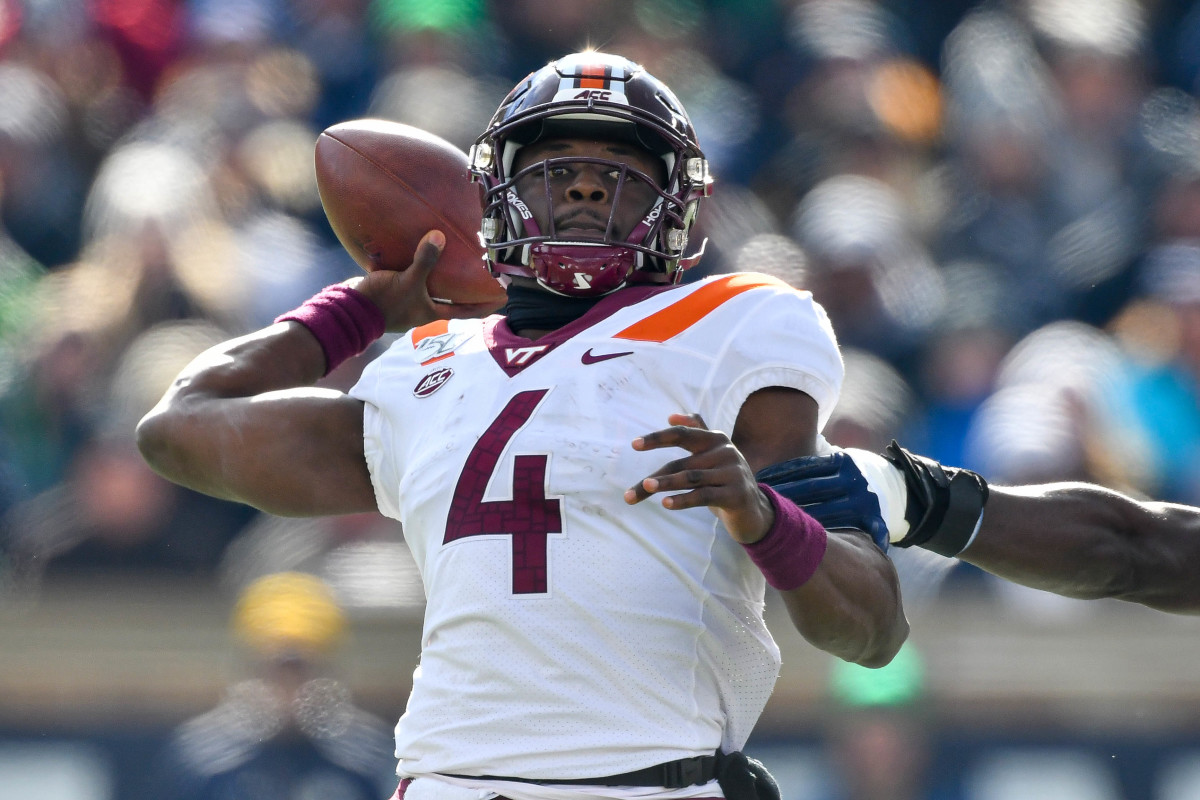Justin Fuente's Revival of the Quarterback Position at Virginia Tech
Prior to Justin Fuente’s arrival at Virginia Tech, the Hokies’ offense was rotting from the inside. As the Hokies’ record on the field declined, perhaps the biggest reason was Tech’s inability to field a competent offense.
In Frank Beamer’s last four seasons as head coach, Virginia Tech finished higher than 83rd in scoring offense just once — the Hokies were 53rd in 2015. The three years prior — 83rd, 100th and 96th.
Fuente had a track record of producing at Memphis — his balanced, up-tempo offense was the cornerstone of Memphis’ awakening as a Group of 5 power in the American Athletic Conference. When Fuente turned in his blue and white clothes for maroon and orange, it was expected that Fuente’s offenses would follow him, specifically his ability to attack defenses through the air.
While Fuente’s offenses have both marveled fans and pushed many fans to scratch their heads, one thing is undeniable — Fuente has had an exceptional impact on the quarterback position.
Passing efficiency
With so many college offenses running Air Raid or pass-heavy attacks, teams like Virginia Tech should pay more attention to passer efficiency than to just raw passing statistics. Since 2012, here are Virginia Tech’s pass efficiency numbers, paired with their passing yardage totals.

Fuente made an immediate impact in 2016, engineering a record-setting offense with Jerod Evans at the helm. The rest of the starting offense was mostly the same as it was in 2015, yet the Hokies finished 33 spots higher in pass efficiency and 37 spots higher in total passing yards.
Virginia Tech still managed to win nine games in 2017, despite a worse passing game. Ryan Willis replaced Josh Jackson early in 2018 and though Willis helped the Hokies improve through the air, a variety of issues tanked the Hokies’ 2018 season.
After a brutal start to the 2019 season, Hendon Hooker helped right the ship and finished with a pass efficiency rating of 165.8, markedly higher than Willis’ rating of 143.4.
The point, however, is that every single offense that Fuente has fielded has been better through the air than Tech’s previous offenses, no matter who Fuente has trotted out.
Elevating the talent level
Part of Virginia Tech’s growth in the passing game can be attributed directly to the talent that Fuente and offensive coordinator Brad Cornelsen have recruited to the program.
Evans, who had the most success of any of Fuente’s quarterbacks in Blacksburg, was the No. 1 junior college quarterback in the Class of 2016. Jackson, originally recruited by Beamer’s staff and later recruited by Fuente, was the 12th-best dual-threat quarterback in the 2016 class. Hooker, Fuente’s first real quarterback recruit, was the 11th-best dual-threat passer in his class and was rated as a four-star prospect.
Quincy Patterson has already shown promise and as a four-star talent, he certainly has room to grow. Former four-star Oregon quarterback Braxton Burmeister joined the team prior to 2019 and along with Patterson, Burmeister gives Tech great depth at the most important position on the field.
While it’s fair to argue that Fuente’s quarterbacks haven’t reached their ceilings yet, it’s clear that the level of talent in Virginia Tech’s quarterback room has hit another level.
Beamer never really replaced Logan Thomas, who didn’t quite live up to his billing anyway. Mark Leal was outside the top-30 among dual-threat quarterbacks and eventually left the program early to pursue his professional career. Ju-Ju Clayton was inside the top-30, but never developed as a quarterback and left the team after graduating in 2012. Brenden Motley served admirably in a backup role for most of his career and was the quintessential teammate, but he mostly struggled when he saw the field. Andrew Ford ended up transferring and later started at Massachusetts.
This gap in quarterback talent led Beamer and offensive coordinator Scot Loeffler to recruit Texas Tech transfer Michael Brewer, who was a good placeholder but was inherently limited as a passer.
Tech’s best recruit at quarterback in the later Beamer years was Dwayne Lawson, a four-star prospect who was the 10th-best dual-threat quarterback in his class. Lawson redshirted in 2015 and unceremoniously transferred during summer camp prior to the 2016 season.
Virginia Tech has come a long way from those days. The Hokies have three former four-star prospects on the roster at quarterback and for now, they’ve avoided attrition.

Room for improvement
Even though Fuente has done an exceptional job turning quarterback into a position of talent and depth for the Hokies, there’s room for growth.
The one knock on Fuente’s job as quarterback whisperer is the level of development his quarterbacks have reached. Jackson, who took over the starting role in 2017, produced less and less as the season dragged on and eventually found himself on the outside looking in. Willis, who replaced Jackson, regressed mightily after a solid 2018 performance. When Willis lost his starting role, Hooker quickly produced but put together two pedestrian performances to cap the 2019 season.
Patterson, perhaps the most anticipated of the group, has yet to develop into a consistent passer. His athleticism and arm strength aren’t in question, but the lack of offensive diversity when Patterson is behind center displays a lack of trust from the coaching staff. From the outside, it looks like Fuente and Cornelsen aren’t comfortable with Patterson running sections of the playbook that would be open to the other quarterbacks.
Still, Virginia Tech has one of the best quarterback situations in the ACC. Tech has constructed their quarterback room with a blend of young talent and depth, ensuring that the Hokies are set at the position for the next one-to-two seasons at minimum.
